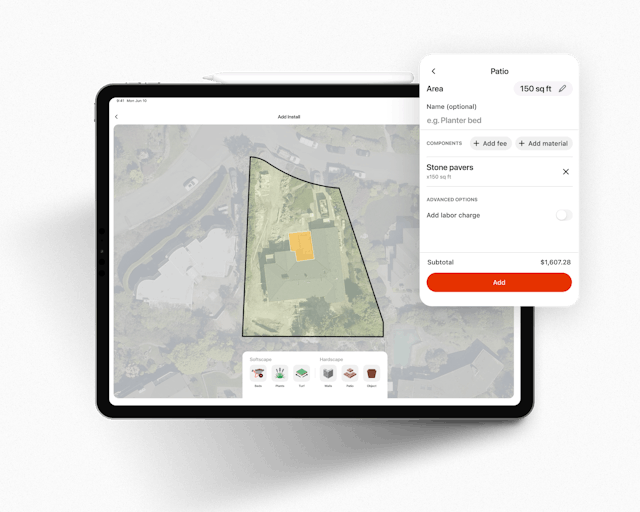1. Contact information
List the name, address, phone, and email of both the landscaping company and the client (or property manager). Accuracy matters for invoices and warranties.
2. Scope of work
Spell out your scope of work in plain English. Include everything covered, even things like pruning seasons. Example:
“ABC Landscaping will provide weekly mowing, edging, and pruning from March through October, including debris cleanup and driveway blowing.”
Avoid vague terms like “general lawn maintenance.” Be specific.
3. Service schedule
Define how often services occur (weekly, bi-weekly, monthly) and how you’ll handle inclement weather or holiday delays.
4. Pricing, payment schedule, and terms
Clients care about pricing so be transparent. Outline how you charge (monthly fee, per visit, or seasonal rate), list accepted payment methods (check, ACH, or credit card), and include a clear payment schedule.
→ If you use Duranta, you can automate invoices, late-payment reminders, and renewals, saving hours of admin work every month.
5. Contract duration, renewal, and cancellation
Note the start and end date, renewal options, and how much written notice is required for cancellation. This keeps both parties accountable.
6. Warranties, liability, and insurance
Detail your warranties, like 30-day plant replacements or irrigation workmanship guarantees, and list your insurance coverage. This reassures clients you’re covered for any property damage or on-site injury.
7. Deliverables and cleanup
Clarify expectations for waste removal and clippings cleanup after each visit. Clients love coming home to a freshly mowed, spotless lawn.
8. Signature and approval
Get your customer’s John Hancock, ideally with an e-signature for speed and convenience. Duranta’s built-in digital signing tools let you close deals faster and store everything in one place.

 Sales
Sales


